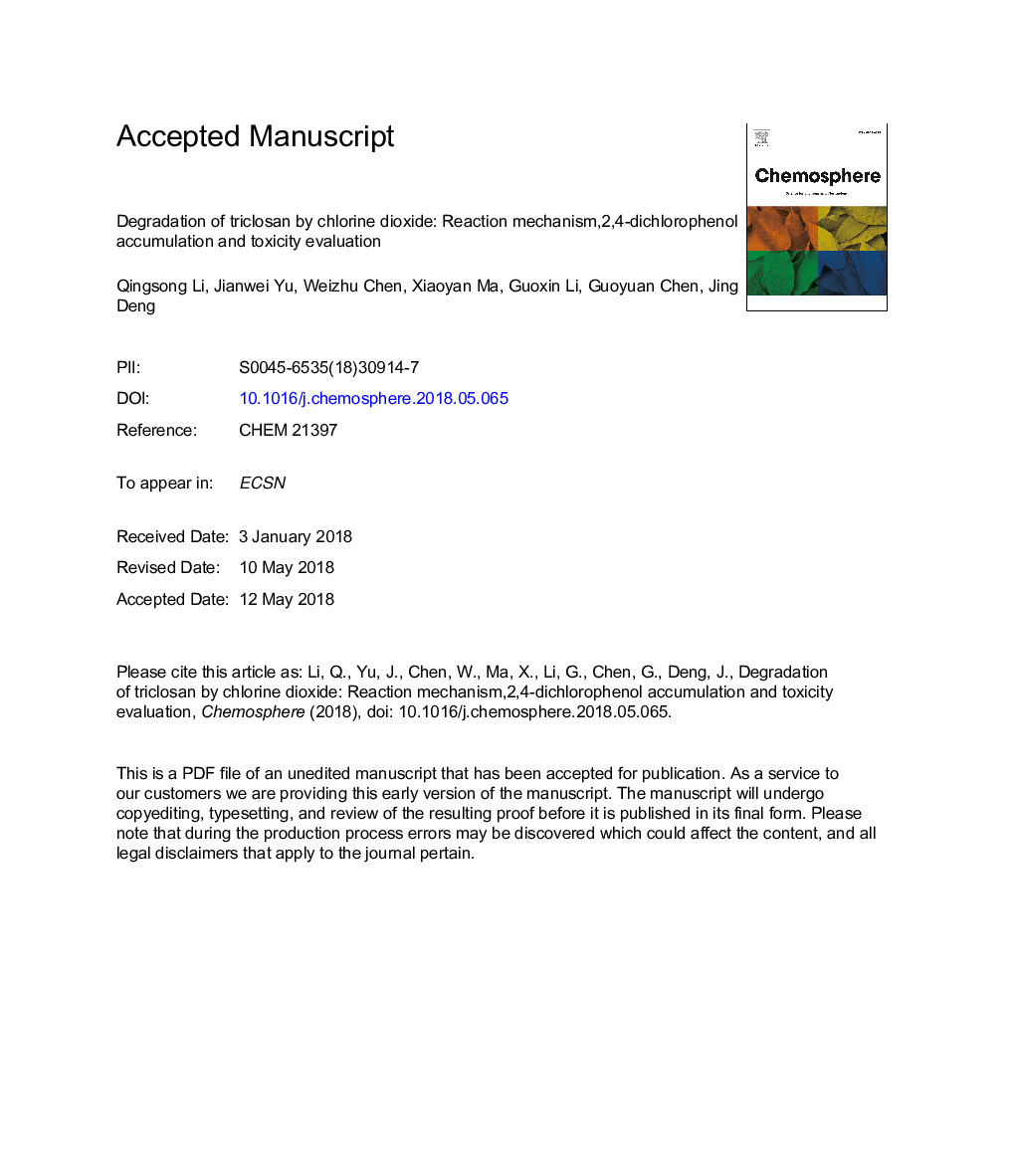| Article ID | Journal | Published Year | Pages | File Type |
|---|---|---|---|---|
| 8850987 | Chemosphere | 2018 | 26 Pages |
Abstract
The mechanism and toxicity of TCS degradation by ClO2 was investigated. Intermediate products during the oxidation process were identified by GC/MS and LC/MS. A microtox bioassay and a SOS/umu assay were employed to evaluate the acute toxicity and genotoxicity of the resulting solutions during the chlorination process. The results showed that the reaction between TCS and ClO2 was of second-order overall. The pseudo first-order rate constants (kobs) exhibited significant dependence on solution pH and chlorine dioxide concentration, with the apparent second-order rate constant, kapp, being 7.07â¯Ãâ¯104â¯Mâ1sâ1 in the pH range of 6.80-7.02. TCS decomposition was accompanied by the accumulation of 2,4-dichlorophenol (2,4-DCP), and the maximum molar yield ratios of 2,4-DCP/TCS were in the range of 31.71%-35.43%. The major intermediates identified were 2,7/2,8-dichlorodibenzop-dioxin (2,7/2.8-Cl2DD), 2,4-DCP, 2,4,6-trichlorophenol (2,4,6-TCP), tetraclosan and pentaclosan. The proposed mechanism for TCS oxidation involved the cleavage of the ether link in TCS, chlorination of the phenolic ring and ring closure of a single TCS molecule. The transformation and degradation of TCS led to reduction of the acute toxicity and genotoxicity. However, irregular fluctuations in the toxicity changes indicated that the oxidation of TCS was not a simultaneous detoxification process.
Related Topics
Life Sciences
Environmental Science
Environmental Chemistry
Authors
Qingsong Li, Jianwei Yu, Weizhu Chen, Xiaoyan Ma, Guoxin Li, Guoyuan Chen, Jing Deng,
